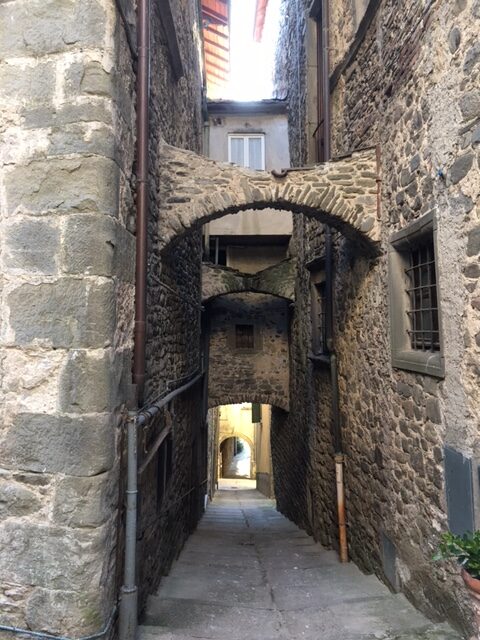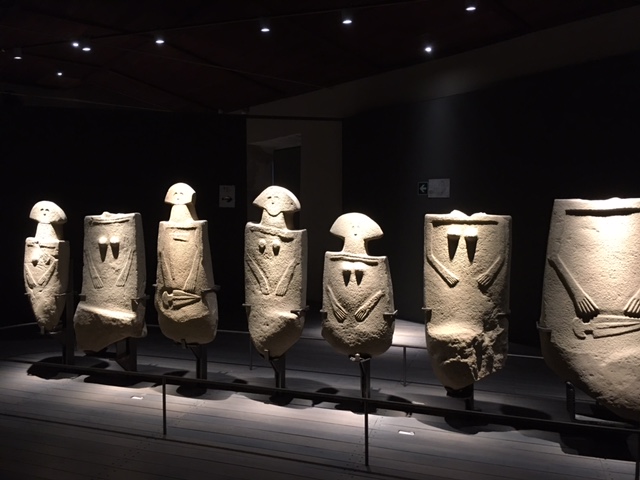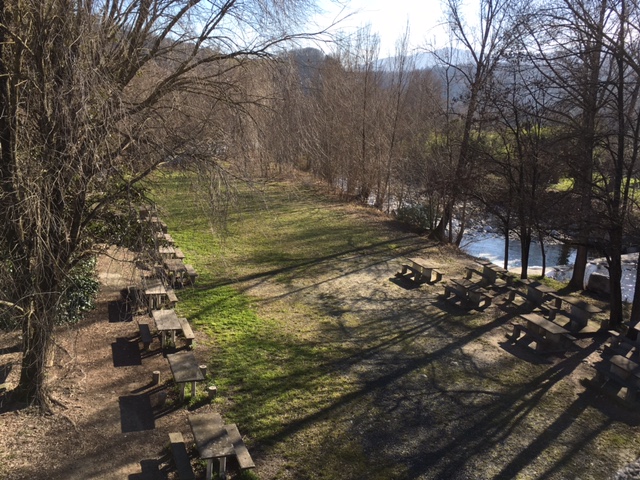Tuscany has done “it” once again! “It” being the fact that the region continues to pleasantly surprise me time and time again even after having lived here for almost ten years. Although, I think anyone who is in love with Italy could say the same thing about any of its twenty regions. It is, quite frankly, hard to get enough of. On this particular one-day getaway, we headed for the small village of Pontremoli in Tuscany’s Lunigiana area.

Pontremoli in all honesty caught our attention because it is part of the Firenze- La Spezia- Pontremoli- Parma route on the regional train. It’s about a 3-hour trip from Florence, but it is a straight shot meaning that you don’t need to change trains and you also have the option of stopping in several of Tuscany’s most famous beach towns on the Versilia coast, such as Viareggio, Pietrasanta, and Forte dei Marmi.
The Gateway to the Apennines
But getting back to Pontremoli. The little hamlet is situated in Tuscany’s northernmost province of Massa e Carrara and close to both the Ligurian and Emilian borders. The Tuscan-Emilian Apennines are part of the town’s magnificent backdrop. It is also believed to have been the capital of the ancient Apuani people (a Ligurian tribe pre-dating the Romans). It was Frederick II who in 1226, made Pontremoli an independent municipality.
What to See
Castello del Piagnaro
The Castle of Piagnaro located at the highest point in Pontremoli is probably the village’s most famous attraction. It is one of the most magnificent in the entire area and dates to the year 1000 AD. A strong defensive castle was crucial during the Middle Ages since the town was located on major trade routes along the Magra river and at the gateway to the Apennines, and also along the Via Francigena.

Museo delle Statue Stele
There is also an extraordinary museum located within the castle: The Museum of the Stele Statues. I’ll be the first to admit my ignorance that prior to this visit, I had no idea these statues even existed, much less that they were found in various places in Italy and throughout Europe. These very primitive-looking, stone blocks were carved as early as 5,000 years ago and depict male and female bodies. In Italy, sixty-three examples have been found right here in the Lunigiana area. A single ticket of just seven euros (full price) gets you into both the castle and the museum. Visit the official website for more details and hours which do vary based on the season.
Torre di Cacciaguerra
The Torre di Cacciaguerra (also known as the “Campanone” by the locals) is a prominent figure in the town’s center. This impressive tower has become the symbol of the town and was erected in the year 1322. It was once part of the Cacciaguerra Fortress which divided the Guelph and Ghibelline factions of Pontremoli. In the 1600s the bells were added and it became a civic tower.
Baroque Pontremoli
One could say that “Baroque Pontremoli” unofficially began in the year 1650 when Ferdinand II, Grand Duke of Tuscany, purchased the town from King Philip IV of Spain. In fact, there are so many examples of fine Baroque architecture that various associations organize tours here. The Santa Maria Assunta Cathedral (early 17th century) is located in Piazza del Duomo and is a must-see for its sumptuous frescoes. Other palaces include Villa Dosi Delfini just outside of the historic center and Palazzo Dosi Magnavacca centrally located within the historic center. Visit the Sigeric Tourism website for specific information about booking tours.

Culture and Cuisine
One of the best parts of visiting Italian villages is appreciating how each area has preserved its unique culture and traditions including its cuisine. In Pontremoli, a first course called testaroli could be considered its signature dish. It is thought to date back to Roman times and is possibly one of Italy’s oldest pasta dishes. Coarse salt and a crepe-like mixture of durum wheat flour and water are quickly cooked on a cast iron hot plate. Once the cooked pancake has cooled, it is then cut into pieces and plunged into boiling salt water much like fresh pasta. The testaroli are then served with olive oil, pecorino cheese, and pesto sauce.
Pontremoli’s most-famous event is in January, the Disfida dei Falò. This ancient rite places two of the village factions in a competition to build the biggest bonfire.
Enjoying the Outdoors
If you’re looking for peace and quiet, you will likely find it here. It is far enough off the beaten path that it isn’t overrun with tourists. The Lunigiana area in general is considered a remote area of Tuscany and is the perfect place to take long hikes along the many river paths. Pontremoli itself has a lovely green area with lots of picnic tables called Giardino delle Bertolini. It is located under the River Magra bridge on the Torre dei Serrati side of the village.

Interesting Tidbits
Few may realize that Pontremoli has a long history in the book publishing industry. In fact, as early as the 1800s, local booksellers would head to northern Italy to sell in remote areas where books were not available to most. Since 1952, it has also promoted and hosted the Premio Bancarella publishing award whose first recipient was Ernest Hemingway and The Old Man and the Sea. The influence of the printed word is everywhere from benches that look like open books, to a large permanent book fair, to literary cafes. In fact, pick up a great book and head across the piazza to Cafè degli Svizzeri, which opened in 1842.
It is also home to Zucchero Fornaciari, an internationally-famous Italian singer-songwriter known for his bluesy-rock songs.
Pontremoli makes the perfect day trip from Florence, Pisa, or even Parma. See a part of Tuscany that very few tourists get to experience. You won’t regret it!

